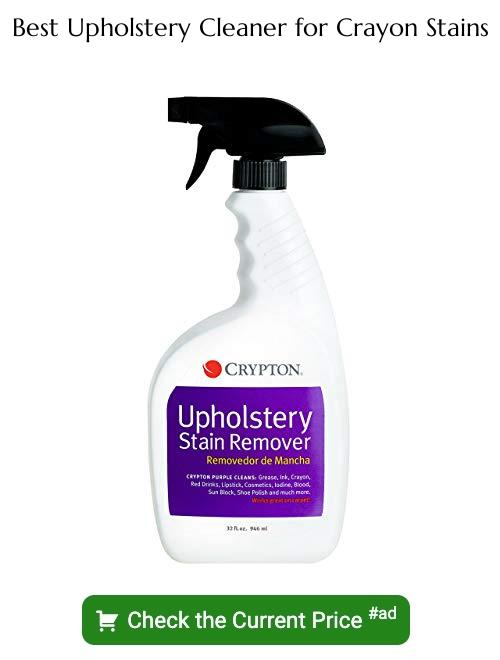Last updated on
Discover effective methods to remove crayon marks from your couch, restoring its clean appearance.
Key takeaways:
- Identify couch material before cleaning
- Scrape off excess crayon gently
- Use dish soap solution for blotting
- Apply baking soda and water paste to remove stains
- Take preventative measures for future stains
Table of Contents
Assess the Type of Couch Material
Identifying the type of material of your couch is crucial before attempting to remove crayon marks, as each fabric requires a different cleaning approach. If you have a leather sofa, you’ll need a gentle cleaner to avoid damaging the surface. Upholstery, on the other hand, might need a fabric-safe solvent. For microfiber, alcohol-based solutions can work well, whereas suede demands a cleaning method that doesn’t involve water to prevent staining. Always refer to the manufacturer’s care instructions or tags found under couch cushions for specific guidelines tailored to your furniture’s material. Conducting a spot test in an inconspicuous area helps ensure that the chosen cleaning method won’t cause discoloration or damage. It’s wise to tackle stains as soon as possible to minimize the effort required for complete removal.
Scrape Off Excess Crayon
Begin by gently scraping away as much of the crayon as possible using a dull edge, like a butter knife or a credit card. It’s important to use light pressure to prevent damaging the fabric. Aim to lift the wax off the surface rather than pushing it deeper into the material. Remember, this initial step will make the following cleaning methods more effective by removing the bulk of the wax, making it easier for cleaning agents to access and dissolve the remaining crayon residue.
Using a Dish Soap Solution
Begin by mixing a small amount of dish soap with warm water to create a sudsy solution. Dip a clean cloth or sponge into the mixture, wringing out excess liquid to avoid saturating the couch. Gently blot the crayon-stained area with the soapy cloth. It’s important not to rub, as this can push the crayon deeper into the fabric.
After blotting, take a separate damp cloth to rinse the area, removing any soap residue. Repeat the blotting and rinsing process if necessary, until the crayon mark begins to lift. Patience is key—avoid the temptation to scrub, as this could harm the couch’s fabric. Once the crayon is removed, use a dry towel to dab the area, absorbing any remaining moisture.
Applying Baking Soda and Water Paste
Baking soda serves as a mild abrasive, which makes it effective for gently removing crayon marks without damaging the fabric. When mixed with water, it creates a paste that can lift stains out of the couch’s fibers.
Begin by mixing a small amount of baking soda with water until it forms a paste consistency. Apply this directly onto the crayon stain using your fingertips or a soft cloth. Rub the paste into the stain using a circular motion; this will help break down the wax and pigments from the crayon.
Allow the paste to sit for a few minutes to penetrate the stain. Afterward, wipe away the paste with a clean, damp cloth, ensuring not to leave any residue behind. If necessary, repeat the process until the crayon is no longer visible.
It’s important to test the baking soda paste on an inconspicuous area of the couch first to ensure it doesn’t cause discoloration or damage to the fabric.
Preventative Measures for Future Stains
Maintaining a stain-free couch requires foresight and some proactive steps. Consider implementing a ‘no eating or coloring’ rule on the couch to safeguard against future incidents. It’s also wise to keep art supplies and snacks relegated to the kitchen or dining area.
Invest in washable couch covers or throws that can be easily removed and cleaned. They serve as a protective barrier and are particularly useful in homes with young children and pets.
Regular couch maintenance can ward off permanent damage. Vacuuming or wiping down the fabric monthly removes dust and dirt, which can otherwise set stains deeper into the fibers.
For homes with small children, consider choosing couch materials that are easy to clean like leather or microfiber. These surfaces tend to be more forgiving with spills and can be wiped down quickly.
Lastly, keeping a stain removal kit handy with the necessary cleaning solutions and tools ensures you’re prepared to tackle any new messes promptly.





